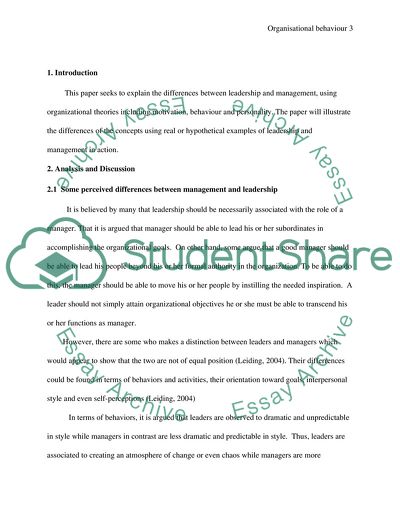Cite this document
(The Differences between Leadership and Management, Using Coursework Example | Topics and Well Written Essays - 2500 words, n.d.)
The Differences between Leadership and Management, Using Coursework Example | Topics and Well Written Essays - 2500 words. https://studentshare.org/human-resources/1754769-organisational-behaviour
The Differences between Leadership and Management, Using Coursework Example | Topics and Well Written Essays - 2500 words. https://studentshare.org/human-resources/1754769-organisational-behaviour
(The Differences Between Leadership and Management, Using Coursework Example | Topics and Well Written Essays - 2500 Words)
The Differences Between Leadership and Management, Using Coursework Example | Topics and Well Written Essays - 2500 Words. https://studentshare.org/human-resources/1754769-organisational-behaviour.
The Differences Between Leadership and Management, Using Coursework Example | Topics and Well Written Essays - 2500 Words. https://studentshare.org/human-resources/1754769-organisational-behaviour.
“The Differences Between Leadership and Management, Using Coursework Example | Topics and Well Written Essays - 2500 Words”. https://studentshare.org/human-resources/1754769-organisational-behaviour.


